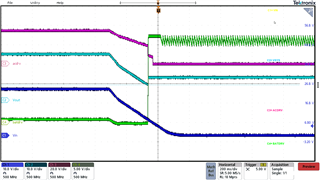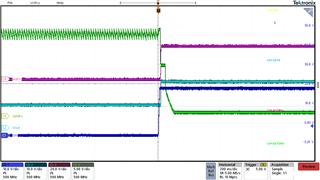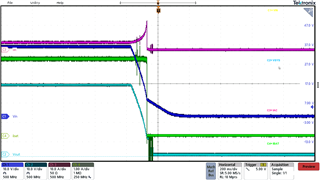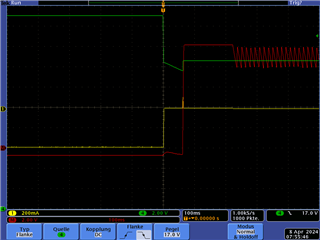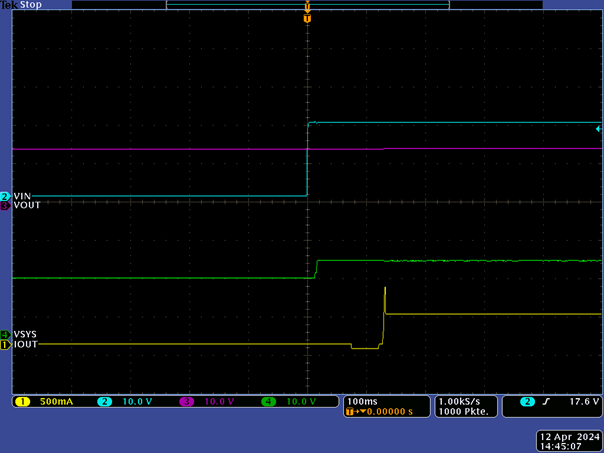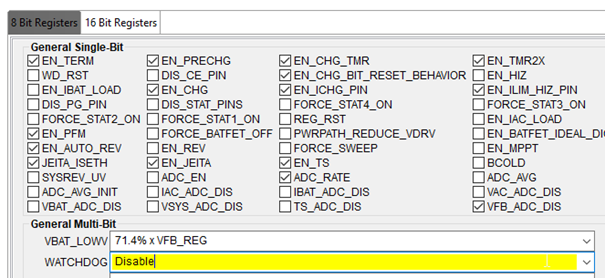Other Parts Discussed in Thread: BQ25750, BQ25756, , BQSTUDIO
Hi, TI-team,
Background:
We want to use the BQ25750 as battery charger for 4S1P or 5S1P li-ion. Furthermore we want to use the power path capability. Especially we want to have the ability to switch between normal battery use (BATFET) and auto-reverse mode.
We decided to buy a BQ25750EVM board. Since this is out of stock until July, we bought a BQ25756 board and changed all the relevant components:
BQ25756 changed to BQ25750RRVR (BQ25750EVM = BQ25750RRVT)
At VSYS connection:
C77, 1µF assembled.
C63, 100nF assembled.
C151, 1nF assembled.
At Pin 32, SYS:
C200, 100nF assembled.
R100, 0 ohms assembled.
R101, 0 ohms removed.
At the FETs for VIN:
R12, 0 ohms assembled.
D1, SZBZX84C15LT3G assembled.
Q5 and Q6, AONS66917 assembled.
R1000 and R1001, 0 ohms removed.
At the BAT_FET:
Q7 and Q8, AONS66917 assembled.
R9, 0 ohms assembled.
R1004 and R1005, 0 ohms removed.
J2 (VSYS) assembled.
Furthermore, since the current range is considerably high we have changed the shunts R2 and R24 both to 20mR (knowing that the values given in bqStudio 1.3.124 have changed accordingly).
File = Charger_1_00-bq25750.bqz
Problem (in test 21V power supply, 4S1P battery, Icharge = 0.5A, optionally: load 15R at VSYS):
If a (resistive) load is connected to VSYS (we assume, this is the intended output for using power path, see also below), then auto-reverse is working when switching between charge/discharge, but with auto-reverse off (i.e. BATFET on) neither charging works nor discharge, the IC falls into a periodically loop trying to switch BATFET. Without any load, BATFET mode works. Connecting the load after switching works also.
We have double-checked the modifications and changed the BATFETs. The behavior persists. Also changing to 'ideal diode' mode gives the same result. The same is true for playing with current limits. Shorting shunts has no effect.
When monitoring the BATFET drive signal, one can see a number of short pulses, increasing VSYS over roughly 40 ms with no load (which we feel a long time). If a load is attached when toggling between charge/discharge, again pulses come, but without fully activating VSYS.
Also strange: When trying to charge, the STATUS output gives "power not good" periodically. It looks like the IC resets internally. However, register content remains present.
What are we doing wrong in BATFET mode?
Questions regarding datasheet:
There is not much info in the datasheet telling anything about the BATFET or ACFET drive signal besides drive voltage and current . So we have no idea, if the gate drive pulsing is normal or not.
Furthermore, we are confused about figures 9.13 and 9.14 'Reverse mode power up and down with load'. Ch2 is labeled with VAC and VAC comes and goes in the diagrams. But ACFET is off in this case, datasheet:
"8.3.6 Reverse Mode Power Direction
The device supports buck-boost reverse power direction to deliver power from the battery to the system when the adapter is not present. During this mode of operation, the ACFET and BATFET both remain off. ..."
So, how can there be an output voltage at VAC? And what is the idea of reverse mode input current regulation (IAC_REV)?



